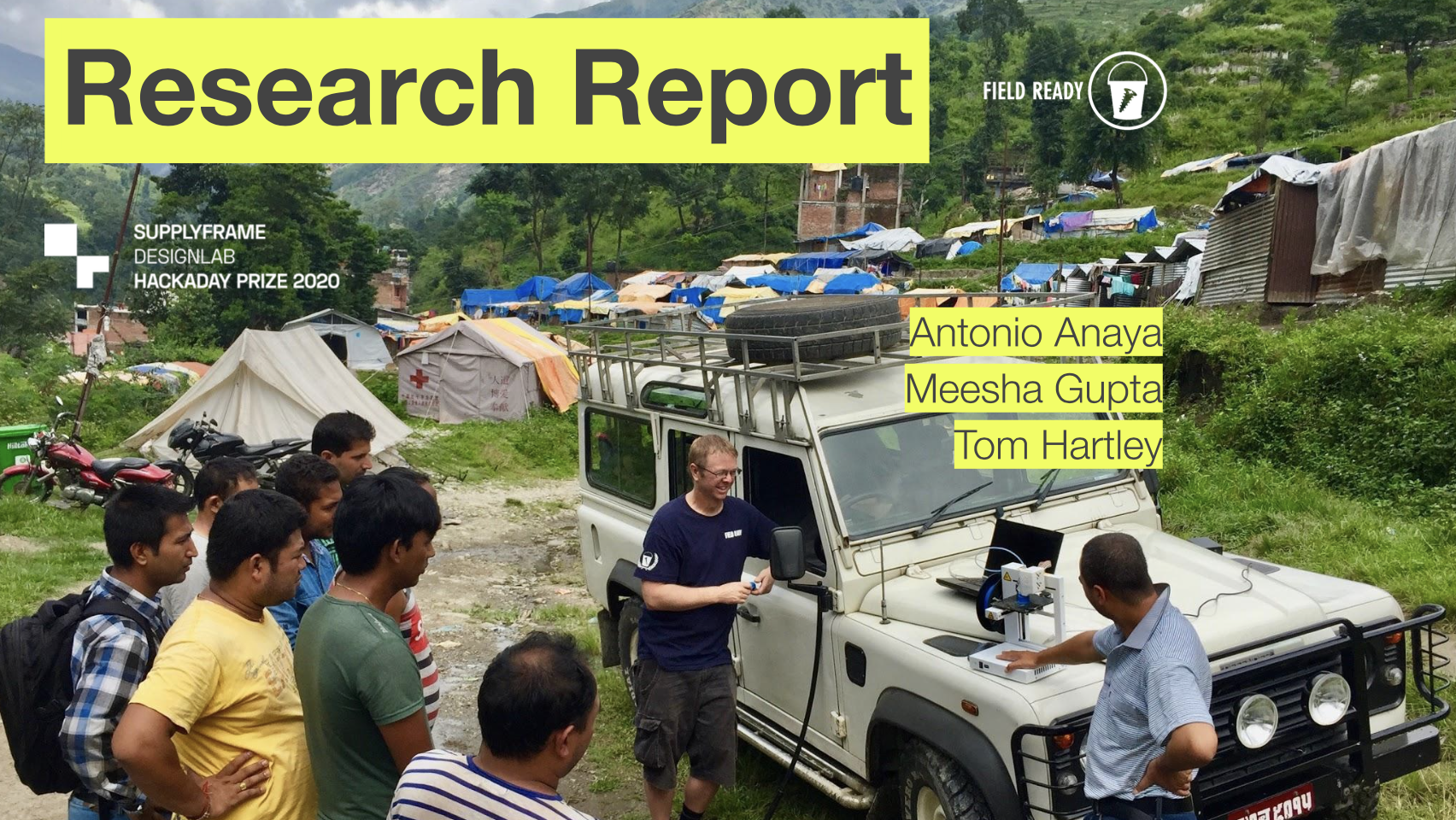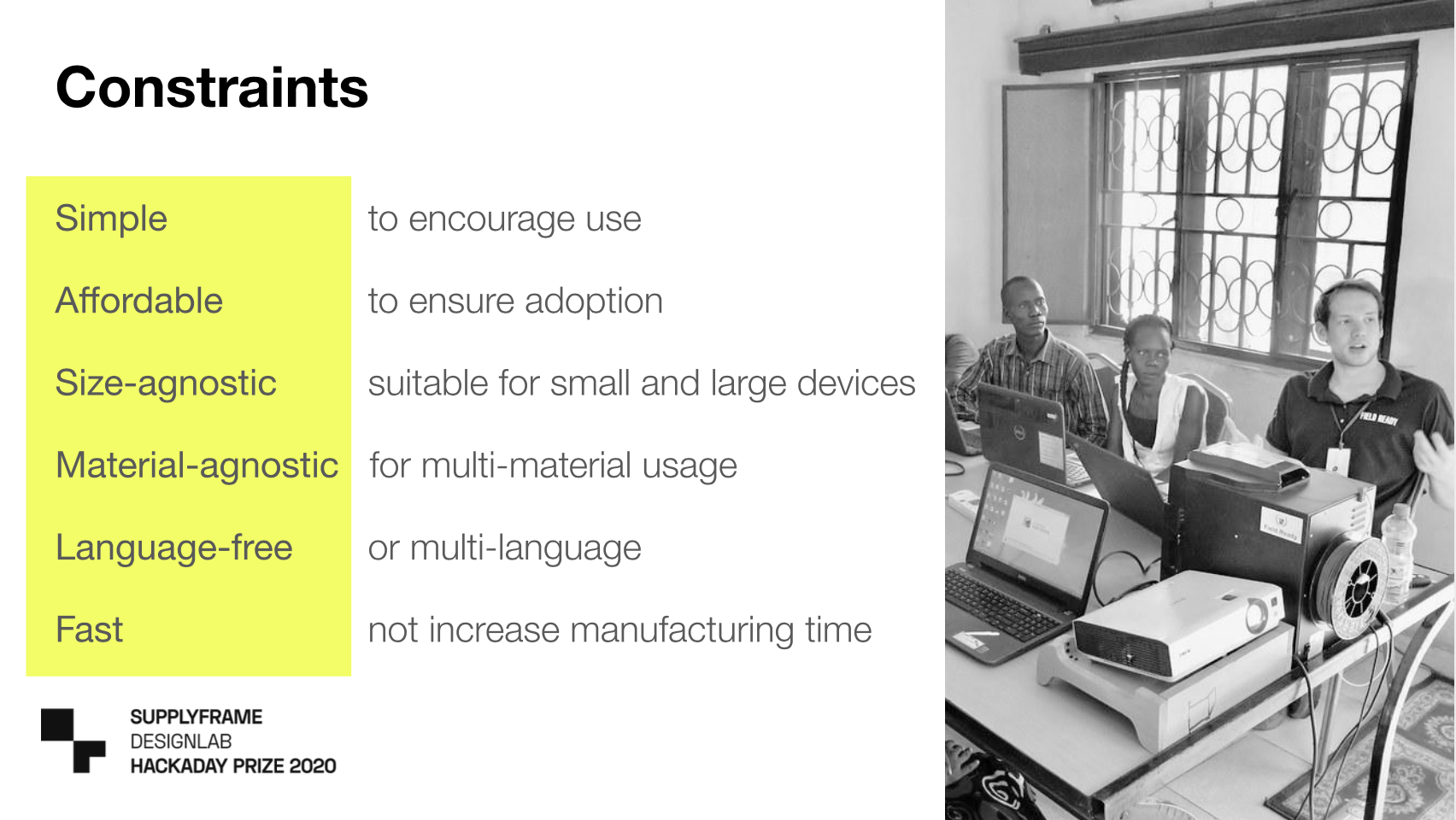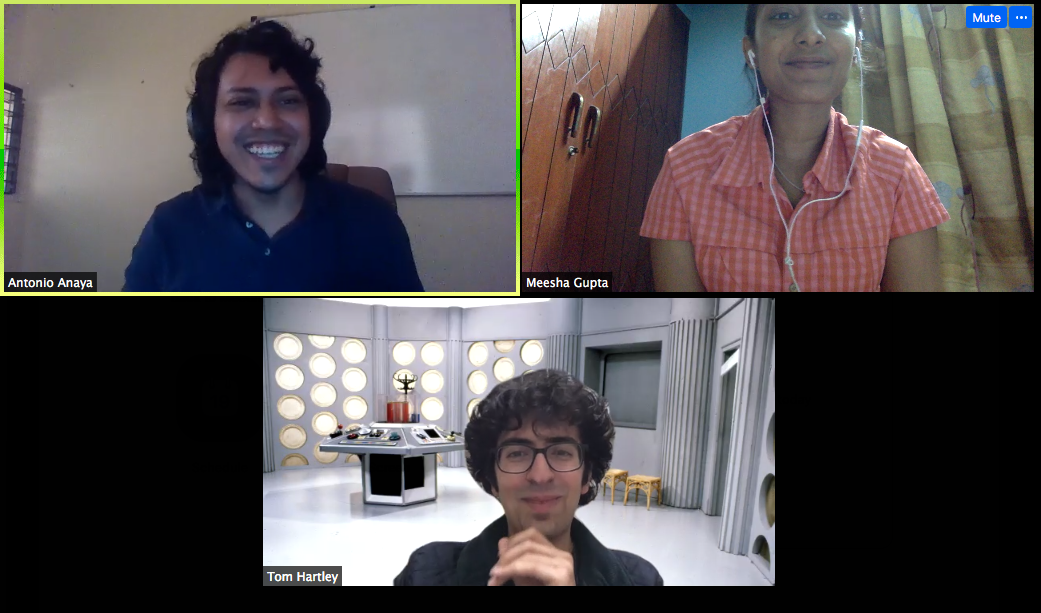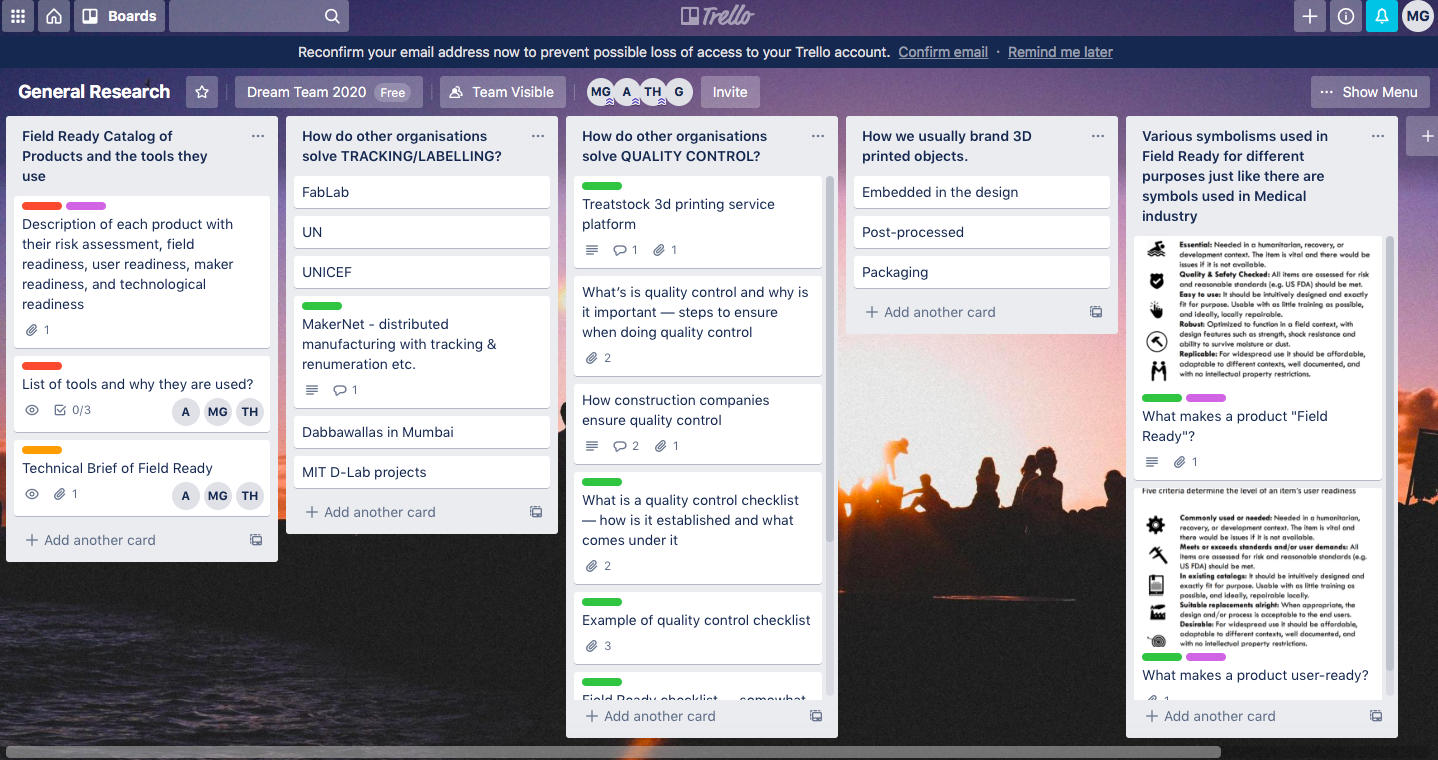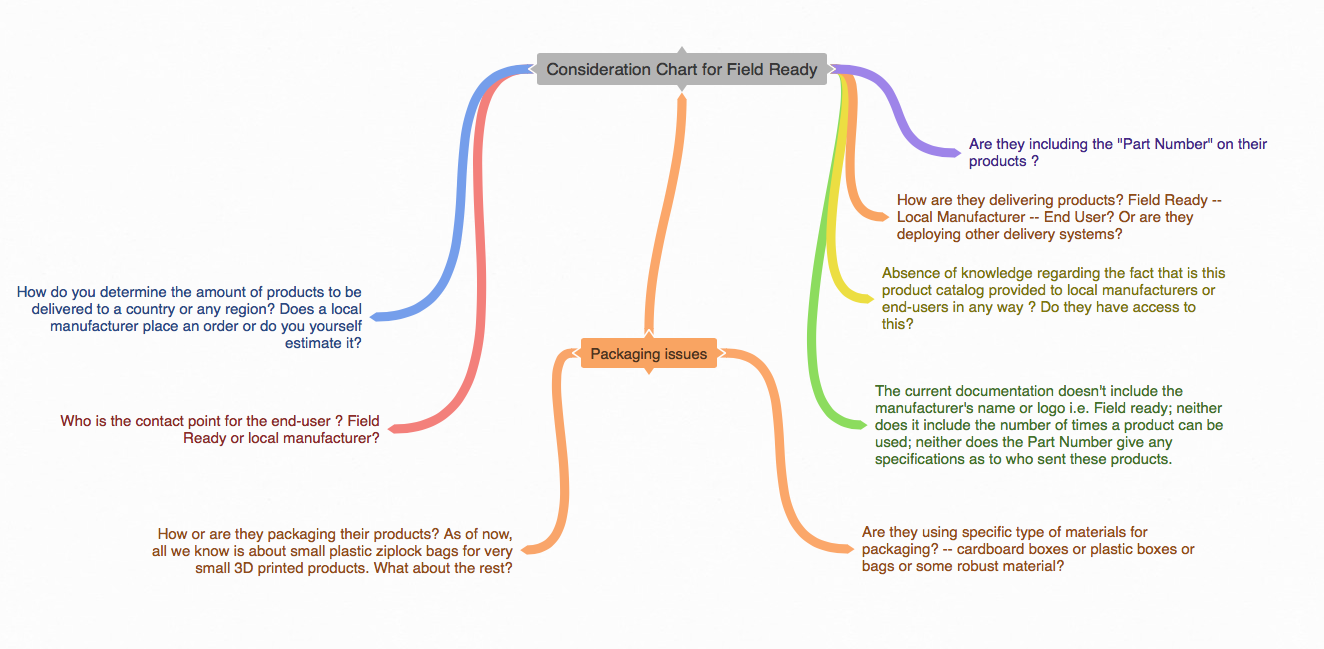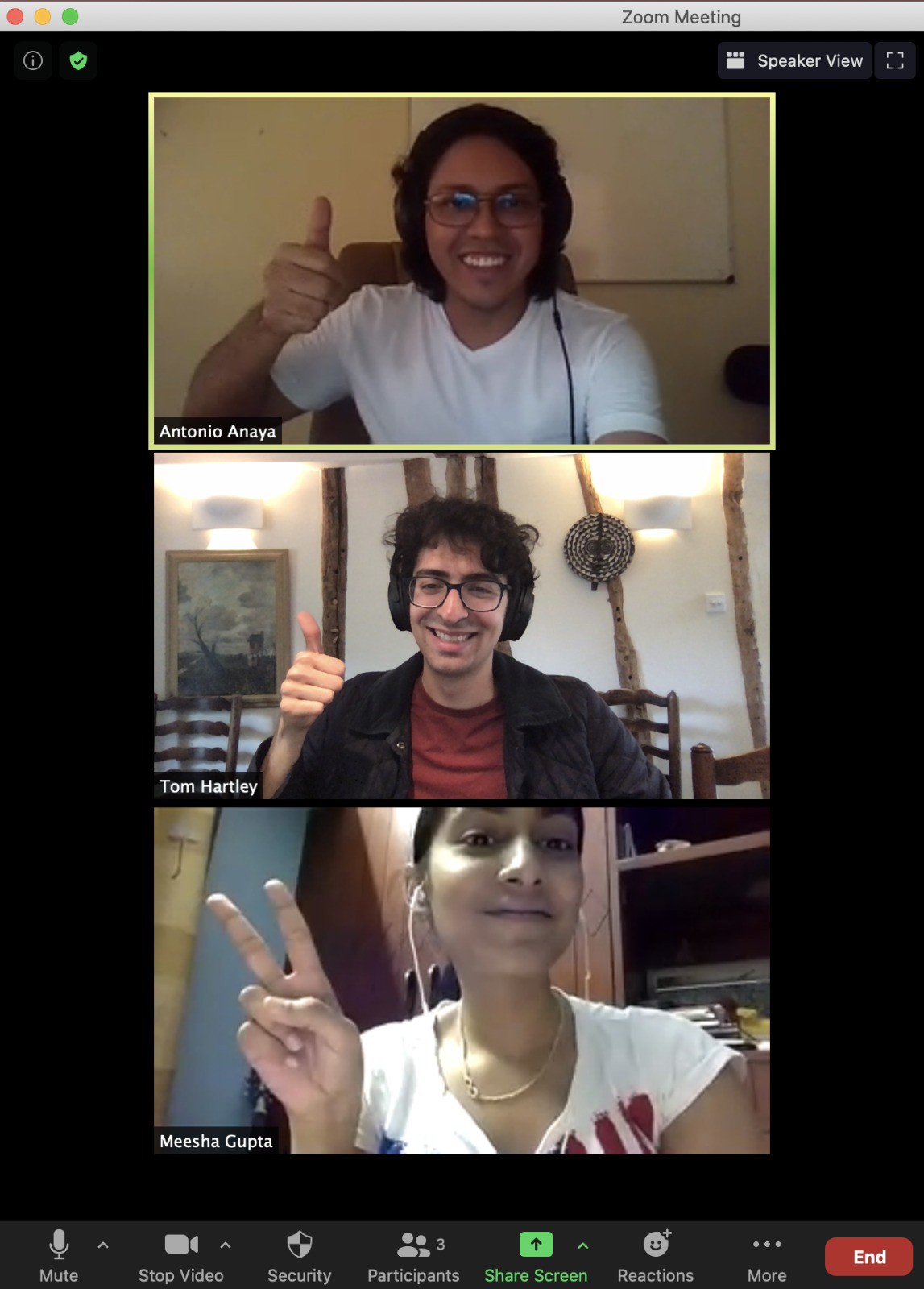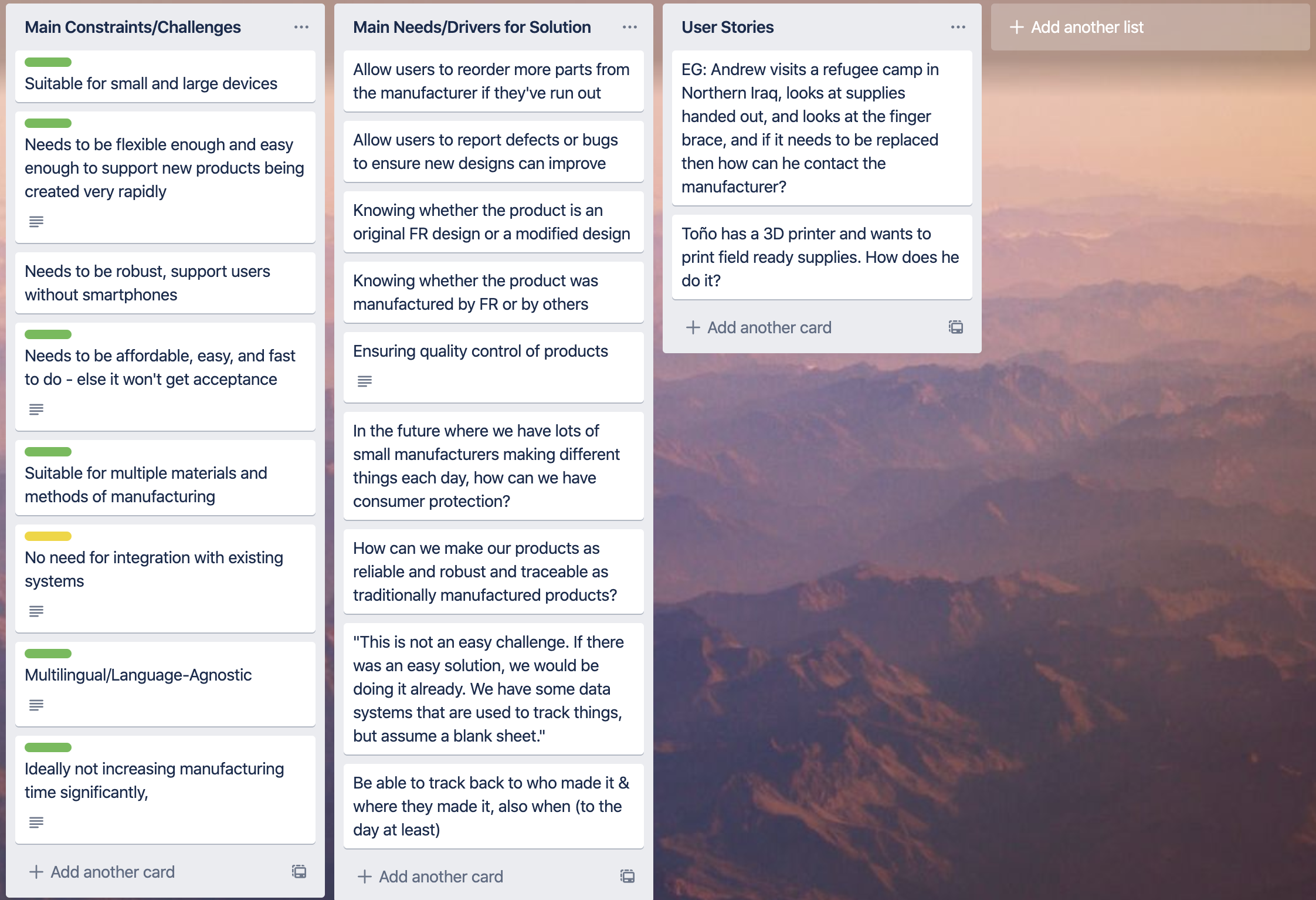-
Consolidation of our Research
07/13/2020 at 11:08 • 0 commentsHey there! Tom here, two weeks into the project - and we have some exciting news! We wanted to put together all our research on the problem into an easily digestible and readable form, so we produced a short PDF with our key insights. It's available now, under the files tab on this project. Go and have a peek! Here's a couple of screenshots...
The next phase of our project is concept generation and ideation - we can't wait to show you what we've been thinking about. As always, please let us know if you have any interesting ideas for us to explore. We'd love to hear them.
Cheers, Tom
-
Hello almost mid-second week!!
07/09/2020 at 07:18 • 0 comments![]()
Hello from the Field Ready Dream Team !! Are you excited to hear about some new updates on this challenge?
Well, lets start with the review of 1st week and how far we have come:
- We are almost entering the stage of concept design after intensive user-centered and Field Ready organization focused research ! We have also had an amazing insightful conversation with Catherine from Field Ready about how they document each detail of their product -- from part number to risk assessment to testing plan and all the necessary things that would help us come up with a concrete idea to design a robust labeling and tracking system!
- Each one of us researched about how different industries such as food, medical and healthcare, and humanitarian aid implement their labeling and tracking systems. Surprisingly, we found out that many of the industries use barcoding system to label but have a complex software which makes it hard to navigate for the user. We also discovered more about RFID tags and how they are used in different industries.
- Our goal is to build an easy-to-use software or some sort of design that is user-friendly but also fulfills the purpose of the challenge -- this labeling and tracking system shall ensure consumer protection and user-friendliness along with product repair and recovery!
- We have come up with a consideration chart which highlights various significant details we need to focus on for our challenge, and whatever product we prototype, it shall cover those bases in an easy way!
Here is our General Research:
![]()
Into the week of concept design:
- After all this research, our plan is to interview other members of Field Ready to get a broad sense of how their products are packaged or delivered or documented or how are they ensuring quality control / assurance at present.
- We are also going to prepare a google survey for them and ask them a few questions which would help us develop concrete ideas serving the purpose of the challenge !
- Each of us will be brainstorming different ideas or tools we would use to tackle this challenge -- keeping in mind the short-term and long-term products and how this labeling and tracking system shall incorporate both of these. While we do so, this consideration chart would help us along with various other parts of our research:
![Consideration Chart Consideration Chart]()
We are extremely excited about brainstorming unique ideas that can be implemented in the real world and which focus on the "need" of the end-user!! Our goal is to incorporate the feature of user-centered design into whatever solution we would come up with.
Till then, stay tuned for more updates later !!
-
Design Research
07/07/2020 at 04:37 • 0 comments![]()
Resume:
Is never easy to determine a solution to an issue about humanitarian aid. Accurate documentation in rapid response scenarios is not always possible. In this context, Field Ready's designs and workflow change by location, expected deployment time, and supply chain, to name a few.
Challenge:
- Is it possible to deploy a framework for remote inspection of decentralized manufacturing?
- How can we make this framework easy for transitioning?
- How can we track information and products in rapid response disaster relief scenarios?
- How can we inspect maintenance and quality control for long term projects?
Our workflow in Week 1:
First stage: Defining our workflow.
- Setting up the goal and purpose of our research.
- Setting up a set of tools to summarize data and insights from research.
- Setting up workspace and workloads.
Second stage: User-centered design.
- Researching and compiling information from the NFP.
- Researching tracking, labeling, packaging technologies, and humanitarian aid.
- Researching QA & QC.
- Understanding NFP activities, products, and motivations.
- Mapping functions and information flow from NFP, manufacturer, client, end-user, and stakeholders.
Third stage: Integration of information.
- Collaborative integration of insights.
We're currently here:
- Non-assumptive user research.
- Information architecture.
Things to keep in mind for Week 2:
- Decision trees.
- User research.
- Standardized labeling and packaging.
- Decision matrix or morphological analysis.
-
Hello from Tom!
07/05/2020 at 20:24 • 0 commentsHi there - Tom here! So - who am I? Well, my first degree was in Electronic and Information Engineer, but I’ve just finished two years studying Innovation Design Engineering in London, expanding my technical base to include all sorts of design know-how!
But enough about me - what have we been up to? I’ve been working with Meesha and Antonio for a week now, and I couldn’t have asked for better teammates. Their tireless dedication to this project has been fantastic, and having such a range of backgrounds really means the ideas, inspiration and approaches to the project have been limitless. Meesha has brought understanding from her software background - from helping us think about information flows, to getting dug in with research, and Antonio has knowledge about the human-centred design process that he’s bringing to help us master our project flow. This, for me, has been key - because there’s no point pushing forwards and making something if you don’t know what the client actually needs.
So, what *does* our client actually need? Field Ready, the NGO we’re supporting, have been fantastic and provided us with a wealth of information. We started with this fantastic interview , scoured their website for knowledge, and then built up a set of questions to ask them. We had a talk with them midweek, and managed to build up our understanding of the organisation and the challenges they’re facing even further. We took all the information we’d gathered, and condensed it into two key categories:
- What are the drivers and issues experienced that have pushed Field Ready to invite us to work on this problem?
- What are the constraints on our solution?
Using Trello, we were able to capture this information and run it past Field Ready to ensure that our assumptions were valid. After some minor alterations, we were happy that we had understood the core of the challenge.
![]()
As you can see, it’s not plain sailing by any means - with 10 weeks to create a working prototype for Field Ready, we’re all recognising the need to work efficiently and smartly. But beyond just the (slightly daunting) nature of many of the requirements, a closer look shows another pattern too: the problem we’re solving is clearly not just a technical one. It’s a human one. We’ve been invited to redesign and reengineer entire supply chains, design new services and fundamentally change how manufacturing works. As Andrew Lamb of Field Ready put it during our call with him: "To have distributed manufacturing, we have to have distributed quality control.” What does that look like? I’m hugely excited to find out.
P.S. Thank you for reading till the end! If you have a moment, I'd be thrilled to hear what you think about our approach. Are we missing anything? What interesting QC projects have you seen? Drop us a message or comment, we'd love to hear!
-
Field Ready Dream Team Challenge - Week 1 - Introduction and Research
07/04/2020 at 08:41 • 0 commentsIntroduction:
Field Ready organization works towards designing, fabricating, manufacturing and delivering products that serve as humanitarian aid or for disaster relief to various places such as Africa, Nepal, Syria, Jordan, Iraq, Vietnam, etc. It's called Field Ready because they go manufacture in the field itself to help various organizations design products in times of crisis. This is why they are extremely unique in their way of producing and distributing the products they manufacture to a wide array of people located in different countries. They have also established various maker spaces and partnered with existing ones in order to serve people in emergency times. The core of Field Ready is strengthening systems of local and distributed manufacturing in order to enhance disaster relief and humanitarian impact.
Understanding the Field Ready challenge:
Although Field Ready is manufacturing a plethora of products that hold immense significance in times of crisis, the end-users of these products do not know who is supplying them these products. They are also unaware about who they shall contact or reach out to when there is a defect in the product, or there is some risk associated to it. In addition, there has to be a way through which the end-users can let Field Ready know when they need an abundant supply of a particular product. There is this need of a robust labeling and tracking system to ensure supply chain management from Field Ready to local manufacturers to the end-users. The users should be able to see the label and know who they need to contact when the product is not functioning or is broken or they need more of those products. This labeling and tracking system shall be integrated with the concept of quality control: where communication, trust, documentation of products along with their testing plan and risk assessment, consumer protection, and user-friendliness is ensured.
Goals:
- Brainstorm and research how labeling and tracking systems are established in various other industries such as food industry, medical and healthcare field, humanitarian aid and disaster relief sector, etc.
- Can we possibly link a product's label with a product's test? This implies that can the label of the product provide information of its testing or trace back to the documentation of the product, which contains the testing procedure and risk assessment associated with that product.
- Can we integrate quality control with this labeling and tracking system ? This implies that can we have a documentation or some sort of checklist from internal to external supply chain management, such that we have a Unique Identification Number for each product associated with it, along with its proper documentation. Can we use that for tracking the distribution of products from Field Ready to the end-users?
- The end goal is to track anything that has been made with Field Ready designs
- Will this tracking and labeling system assure consumer protection, user-friendliness, simple and standardized (easy to use), evaluates solutions, and ensures a roadmap for reporting and repair?
2020 HDP Dream Team: Field Ready
The 2020 HDP Dream Teams are participating in a two month engineering sprint to address their nonprofit partner. Follow their journey here.
 Supplyframe DesignLab
Supplyframe DesignLab